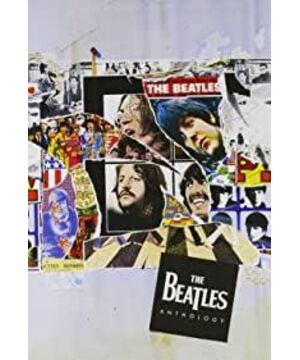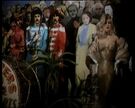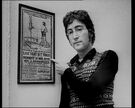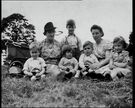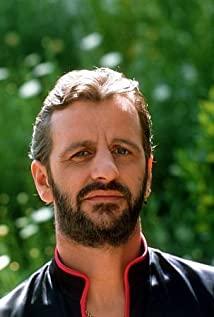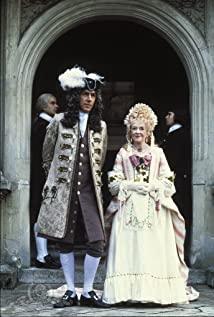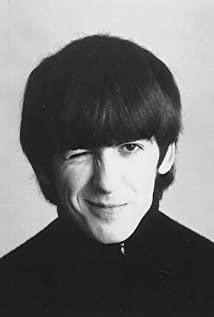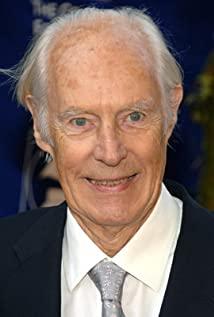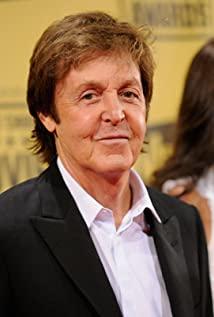It was written two or three years ago, and it looks like that now. I can't find the subtitles of each chapter. The original text was published in "Show 001", which was published by "Grinding Iron Books", without deleting a word. It is reliable
The Beatles In Films
1965 In July 2009, John Lennon said in an interview with reporters, "We are more popular than Jesus Christ at this time." This sentence, which seemed shocking at the time and caused an uproar, continued to prove it in the days to come. energy of. In this century-old utopia full of glory and dreams, The Beatles, just like the ever-showing miracles, has left the world with rich images and reality.
The four lads from Liverpool only had a total of ten years from the band's formation in 1960 to its dissolution in 1970. But this decade was the most avant-garde and reflective decade for Western capitalist society. The success of The Beatles is inseparable from the combination of political reflection, business mechanism and popular culture in the society at that time. The then-active film market and the growing sophistication of film sound technology naturally brought their influence into another realm. In the past ten years, feature films, documentaries, cartoons and a large number of music videos related to it have come out continuously, and the wealth left to music fans is self-evident.
The Beatles became popular in 1963 with the release of the albums "Please Please Me" and "With the Beatles". In particular, one "I Wanna Hold Your Hands" allowed them to conquer the always discerning American music fans. In 1964, Brian Epstein reached an agreement with United Artist, an American film production company, to shoot a film with four members co-starring, so that an album of the same name from the film could be released in the United States, and this album It's A Hard Day's Night that really meant The Beatles got out of puberty.
The film's strange title originally came from Ringo Starr. When he said in an interview with DJ Dave Hull, "We're always working, day work, night work. When I think I'm working during the day, I say, 'It's been a tough day.' I look around. It was pitch black and it turned out to be night, so it was A Hard Day's Night." Lennon also mentioned the origin of the title in an interview with Playboy magazine. He said: "I was driving home and director Richard Lester asked me for the title of the film, and I said Ringo had vaguely said A Hard Day's Night, you know, typical Ringo He didn't mean to be funny, but he said it, the director said it, just use it. A Hard Day's Night became the title." In 1994's The Beatles Anthology, Paul McCartney said that Not so, it wasn't the director who really thought of the name but The Beatles themselves. He said: "A Hard Day's Nigh was indeed said by Ringo, but not in the interview. The filming was about to end, but the name hadn't come up yet. So a few of us gathered at Twickenham studios to brainstorm ideas. The title, but it never came to fruition. Towards the end, Ringo, who always likes misuse of words but uses them very cleverly, said 'Alas, A Hard Day's Night', so we used it."
The Beatles complied. A contract with the studio where they wrote all the songs specifically for the film, including "You Can't Do That," "I Should Have Known Better," "Tell Me Why," and more. Among them, the director cancelled the long-prepared "I'll Cry Instead", and "You Can't Do That", which appeared in the concert part, was also cut off in the final version of the film.
The film shows The Beatles' tumultuous day in 1964 as superstars and mortals struggled. The film was shot over six weeks and cost a total of $500,000. In order to shoot this film, the producers recruited Richard Lester, who was still famous at the time, and he was just a young man with only TV commercial TV production experience. Screenwriter Alun Owen is also from The Beatles' hometown of Liverpool. He was selected because The Beatles was very familiar with his play No Trams to Lime Street, which fully demonstrated the characteristics of Liverpool's dialect in this play. Therefore, he can fully grasp the language habits of the four band members. The writers constructed the script from the perspective of the band members who became prisoners of their reputation, day and night performances and work. Alun Owen spent all day with the band in order to write the script, and when he asked what his daily life was like, The Beatles told him: "a room and a car and a room and a car and a room and car ". Later, this sentence was used by him in the film and became the lines of Paul McCartney's annoying grandfather. He said in an interview: "I knew from the beginning that the youngest was 21 and the oldest was 23, and they had never performed before, so I wrote short lines, 6 words in a sentence, so that the editor could The story can be edited so they can handle the entire conversation." The lines in the film fully demonstrate the frivolous, witty, witty, youthful nature of the four members of the band.
John Lennon said in a 1964 interview that the production of the film was different from the past, basically shooting in the order in which the story scenes happened. Director Richard Lester takes the form of a "pseudo-documentary" that mixes a lot of music and comedy. The famous singer Phil Collins also appeared in the corner of the film as a 13-year-old extra. The film's premiere was scheduled for July 6, 1964, the day after drummer Ringo Starr's 24th birthday. The fourth day that followed, the self-titled music album A Hard Day's Night was released, which was also The Beatles' first soundtrack album
. This semi-autobiographical film was full of lively jokes and energetic rock music. Stylistically influenced by 60s spy movies, pseudo-documentaries and pop music videos. It created a standard for the shooting of musical films in the future. Following the release of the soundtrack to the film of the same name, the film was a huge commercial success and, at the same time, was a critical hit. It was named "One Hundred Movies of All Time" by Time magazine. Village Voice calls it "Citizen Kane in the movie jukebox." British critic Leslie Halliwell praised it as "caricatured with a musical rhythm". It was nominated for both Best Screenplay and Best Score at the Oscars. Good word of mouth and praised by critics have made The Beatles a myth. In June 1965, at Buckingham Palace, Queen Elizabeth II personally awarded the MBE (Members of the Order of the British Empire) medal to each member.
The success of the film also brought more accolades to the young director, who made The Beatles' second film. "HELP! " was released in 1965. The film was released in the same way as the former, with a soundtrack album of the same name following the release of the film.
If "A Hard Day's Night" started The Beatles' cinematic mythology, their second film is a pure gag entertainment film. The movie HELP! ” also tapped Richard Lester, the director who brought them huge success, to create a pure comedic adventure. It still continues the image style of the previous film, a hodgepodge of comedy and music, and elements such as playfulness, adventure, pursuit, mysticism and exoticism are used excessively. The film keeps jumping from the Bahamas to the snow-capped mountains of Austria. The vaudeville camera language he also led the trend of the contemporary pop music video image style. Ringo Starr's talent for comedy is thoroughly tapped in this film, and he's undoubtedly the protagonist of the film with a plethora of jokes. The film revolves around a ring, and a group of evil gangsters from the East are planning to sacrifice a woman to the gods. Just as she was about to be killed, they discovered that the ring she was wearing was missing. In fact, it was taken by Ringo Starr. In order to retrieve the ring and sacrifice to the gods, the gangsters came to London...
This film was inspired by the classic movie "Duck Soup" by the Marx brothers. It is also a parody of the 007 series. Ironically, the rights to the 007 film were also in the hands of United Artists, the film's producer.
The box-office success of "A Hard Day's Night" gave director Richard Lester a large budget, so the film was shot in color, making it The Beatles' first color film. Locations were also turned around in several countries. While filming a scene in a restaurant, George discovered Indian-style music, and for the first time he incorporated third-world musical styles into his songs, which became a starting point for his later music. In particular, he discovered the unique sound of the sitar and introduced it into the band, as evidenced by Norwegian Wood. It was this opportunity that led The Beatles to travel to India to learn meditation from Maharishi Mahesh Yogi. Like the previous one, the film covers many classic songs such as "Ticket To Ride", "You're Going To Lose That Girl", "the title track", "Help!". Best of all, the film ends with the title song "A Hard Day's Night" from the previous film.
Ringo is generally considered the most mediocre of the four members of The Beatles, and in several of their films, notably A Hard Day's Night and HELP! , Ringo's comedic talents are on display. Frail and sickly from a young age, he had a tendency to "get stupid easily" in kindergarten. A lot of hilarity in the movie became a natural stage for him to show his own qualities. "HELP! "The clumsy character he played made him a laughing stock for a while.
Although the film was well received by critics, it still fell short of expectations. The Beatles didn't enjoy much of the filming either, and they weren't very happy with the final result. John Lennon said: "The film was completely out of control. We put too much energy into A Hard Day's Night and it was only semi-realistic. But HELP! Didn't explain everything. Looking back now, how risky it was. In a way, maybe it was because we didn't spend as much time as we did on the previous one. Maybe it was because of that There was a time when we were smoking weed every morning, nobody communicated with us, there were dull eyes and giggles everywhere. We got up at 7 every day and still didn't do anything, you know we've changed How impatient." The Beatles' daily jam-packed schedule may also have contributed to this result. "HELP! ” became their last full-length feature film. United Artists' third Beatles film was the 1970 documentary "Let It Be." Because the four-member band in the 1968 cartoon "Yellow Submarine" was not the real protagonist of the film, and even the dubbing was done by someone else. They only appear in the last few minutes of the film, so they don't count.
In addition to the fully commercialized entertainment that facilitated the release of the album, The Beatles has several documentaries. In particular, the film shot by the Maysles brothers, masters of American "direct film", has become an immortal classic in the history of documentary films.
"The Beatles: The First US Visit" is a film documenting The Beatles' first trip to the United States in February 1964. The film was shot by the Maysles brothers, the famous documentary masters. For American pop music, this "virgin" tour was the beginning of an era. Previously, there was no place for British music in the eyes of American fans, but that all changed when they stepped onto the stage of The Ed Sullivan Show. At that time, the United States was in the shadow of the defeat of the Vietnam War and the assassination of President Kennedy, and they needed the appearance of a fantastic mythical icon to drive away the cloud. It is this moment recorded in the film. Since then, rock music and the counterculture movement of young people began to occupy this historical stage, and the lifestyle represented by consumerism and hedonism has become the belief adored by teenagers from the middle class. , the huge historical floodgates were opened.
The film is composed of scenes in chronological order throughout the US tour, recording four performances including "The Ed Sullivan Show" in New York City, "The Washington Coliseum Concert" in Washington, D.C. and "The Ed Sullivan Show" in Miami Beach , performing tracks from "All My Loving" to "I Want to Hold Your Hand". The directors Maysles brothers are representatives of American "direct film", and have made a large number of documentaries in their lives. Including the famous "Salesman", "Grey Gardens". The Maysles brothers also filmed the Rolling Stones documentary "Gimme Shelter". "Direct film" is rooted in the practice of simultaneous recording. It adopts an observational method, which excludes the photographer's participation and interference as much as possible, and tries to avoid the photographer from appearing in the picture. The photographer is always in the role of a bystander. In this film, these characteristics of direct film are fully expressed, and the four band members of The Beatles can be seen in the United States when they first arrive in the United States.
Outside the blue sky, deep in the colorful clouds, there lived several magicians. By casting spells, they made the usual long journey into a truly magical journey. Magical Mystery Tour is a TV movie starring the four members of the band. It originally aired on BBC One on December 26, 1967. The film was 52 minutes long and took 11 weeks to edit from about 10 hours of footage. At the beginning of the filming, there was no script, and it just relied on some handwritten sketches or ideas, and it was adaptable according to the situation on the spot.
The film tells the amazing journey of a group of people in a British sightseeing bus, including Mr. Richard Starkey (Ringo Starr), a newly widowed Auntie Jessie, the rest of The Beatles and a director. . The film starts with the theme of "something strange is about to happen". It can be seen as a hodgepodge of MTV's due to its less clear narrative. Band performances are interspersed from time to time in the film. These include "I Am the Walrus" by the four band members wearing animal masks, "Blue Jay Way" by George Harrison and "Death" by Neil Innes and Vivian Stanshall and performed by the Bonzo Dog Doo-Dah Band Cab for Cutie. The shooting technique also used the popular overprinting, no-skill editing and some deliberately selected camera angles. Like previous The Beatles films, Magical Mystery Tour is filled with a lot of gags, jokes, sideshows, and gags. Of course, the film can still be regarded as a road film, just as they describe their life as "a room and a car and a room and a car and a room and car", the room and the road have always been throughout their film. visual theme. This film is no exception. From Devon in the UK to Nice in France, the camera always follows the bus with the "Magical Mystery Tour" printed on the country road.
After the film was shown on TV, it didn't get the expected positive reviews, and the band members were evasive about the TV movie. Paul McCartney said in an interview with the magazine: "We didn't think it was a good movie either, it was just our take on it. If we screwed it up, it was screwed up. . This is just one of our adventures, even though it failed. We will do better next time." However, after a while, Paul's attitude towards the film took a 180-degree turn, "Looking back at this film, I don't think it's a problem at all, and we're very satisfied with it."
If I had to choose one film that combines music and film with the best, most artistic value in the history of the Beatles, it would be this 1968 film. Yellow Submarine. At the same time, this cartoon is also the most unique and alien work of many The Beatles images.
Finished filming "HELP!" " and the TV movie "Magical Mystery Tour", the already tired The Beatles lost interest in a third film from United Artists. To get the job done, making a cartoon is naturally a time-saving and labor-saving solution. (This seemingly lazy approach ultimately didn't work, and the band had to shoot Let It Be as a real United Artists film under the contract.) After seeing the animation sketches, the four band members thought the style was very good. Interesting, so I agreed to arrange the live-action part in the last scene of the film. At that time, I originally planned to make the background of the characters into a psychedelic effect in the later stage, but due to the constraints of funds and time, I had to switch to a completely black empty background. The film was a huge box-office success when it was released, and several The Beatles members expressed their love for this remarkable animated film in interviews later in the year.
"Yellow Submarine" was completed by George Dunning, a famous animation creator at the time. He previously completed The Beatles, an animated series based on the band's four members, for the BBC. He organized a total of 200 artists, and the production time reached 11 months. Among them, the important scene "Lucy in the Sky with Diamonds" was completed by him independently.
The film perfectly combines the music of The Beatles with the pop art that was popular at the time. Like many music films, the music becomes the narrative driving force of the entire film. The whole story consists of a series of scenes that fully showcase the music, but despite this, the integrity of the film is not destroyed, and Yellow Submarine is still a modern fairy tale full of metaphors. The plot of the film is very simple, the story starts with peaceful and quiet music, and the people in the pepper kingdom live comfortably on the screen. The sudden attack of the Blue Devil broke the Eden-like tranquility of the entire kingdom. Defenders of the kingdom Sgt. Pepper's Lonely Hearts Club Band is thwarted by this group of bad guys. At a critical juncture, the king of the Pepper Kingdom sent Old Fred in a yellow submarine to rescue soldiers. When he came to Liverpool, he met a frustrated Ringo and persuaded him to save the whole pepper kingdom. Ringo found three of his good friends, namely John, George and Paul, who were riding a yellow submarine with Old Fred. Dressed up as Sgt. Pepper's Lonely Hearts Club Band, they returned to the Pepper Kingdom after all odds and ends, and they finally saved the entire kingdom from the Blue Devils. Songs and flowers, love and peace are back here again. At the end of the film, real people appear in the picture instead of animated characters, and they half-jokingly display the souvenirs they have obtained. George gets the engine of the submarine, Paul gets a little love, Ringo is still half a hole in his pocket, then John finds new blue devils in the theater, and the way to beat them is to sing, then the film ends with All The singing of Together Now ends, and the title of the song written in many languages appears at the end.
In contrast to the Disney-style cartoons of the time, Yellow Submarine took the form of restrained animation to defy rather than simulate reality. The painting style is also different from the Impressionists who faithfully depict the surrounding scenery. Inspired by popular pop art, the film's colorful, symbolic images fit the psychedelic theme of the film's music. The visual style was deeply influenced by the popular Andy Warhol, Martin Sharp and others at the time. The two albums Magical Mystery Tour and Sgt. Pepper's Lonely Hearts Club Band in 1967 had already kicked off the psychedelic wave of the late 1960s, and Yellow Submarine was born during the heyday of the wave . The use of hallucinogens, the mysterious oriental philosophy, these elements of hippie culture were absorbed into the creation of the film, the abstract picture design and surreal scenes just fit the inner meaning of these elements, the psychedelic experience effect is natural it goes without saying. The important song "Lucy in the Sky with Diamonds" in the cartoon also seems to suggest that the music of The Beatles is under the influence of LSD at this time. In a way, it took a form that represented the escapist normality throughout the 1960s, and also set the stage for the animated parts of Terry Gilliam's Do Not Adjust Your Set and Monty Python. kind of tone.
The film's self-titled soundtrack album, Yellow Submarine, was released in 1969, the year after the film was released. It's not a studio album in the fullest sense of the word, it includes six songs and the rest is a soundtrack composed by George Martin. And "All You Need Is Love" has long been included in the album "Magical Mystery Tour", and "Yellow Submarine" is also a famous song in "Revolver".
In January 1969, The Beatles intended to make a documentary for their next album. This album was originally called "Get Back". At that time, the four members were busy with things, and they had no intention of taking care of this band that existed in name only. Paul named the album "Get Back", which means he wanted the band to go back to the good old days. And the deteriorating relationship can only make him Let It Be. Following the recording of the album, the band began preparations for their final live performance on the rooftop of Apple's Savile Row in London. The entire live performance was recorded and appeared on "Let It Be", then, in the summer of 1969, The Beatles recorded their last album, "Abbey Road". "I Want You (She's So Heavy)" was the last time all four of the band were in the studio at the same time, on August 20, 1969. On September 20, John Lennon announced his retirement from the band. The last track "I Me Mine" was recorded on January 3, 1970, on the album "Let It Be", while John Lennon was in Denmark and did not record.
The film premiered on May 20, 1970. The original purpose was to record The Beatles rehearsing for the album and eventually performing live, but the inadvertent nature of the documentary's capture of life is fully demonstrated in this film. Let It Be unwittingly captures the details of the eventual disbandment of the greatest band of the 20th century. The documentary is mainly divided into two parts, one is the scene they rehearsed at Twickenham Film Studios. They are tense and divided, showing dissatisfaction with the work process. They were accustomed to recording at Abbey Road Studios at night and were tired of the way they worked during the day. The scene where George Harrison announced his departure from The Beatles was not recorded, which is the only pity about the documentary. It is worth mentioning that Yoko Ono accompanied John during the filming process, and the most important woman in John Lennon's life appeared in the picture. Songs performed in the film appeared on the self-titled album "Let It Be", and some songs from "Abbey Road" were also included in the video
The disagreements between the band members didn't just appear during the filming of the film. In the earliest planning part, these contradictions have begun to show. Their original idea was to end the film with a show. Paul suggested setting the venue at a small club, as they did in the early days. John thinks it should be placed overseas such as Africa. Ringo insisted on staying at home in the UK. George, on the other hand, put on a stinky face that didn't take any kind of gig. Since there was no consensus on the venue, The Beatles planned to perform at their doorstep. The location is the rooftop of Apple's headquarters. The footage of the film is freely switched between the performance of the band members and the crowd who are attracted by the loud noise and watch downstairs. The police who arrived after hearing the news finally stopped the performance and the film ended. They performed "Get Back", "Don't Let Me Down", "I've Got a Feeling", "One After 909", "Dig a Pony" and more on the rooftop, ending with Paul's hoarse voice Shouting "Get Back", as if trying to repeat their past glory days. These classic scenes made The Beatles' last public performance,
"Let It Be" premiered on May 20, 1970, and won the Oscar for Best Music, Best Original Song the same year. However, due to the circumstances at the time, the four members of the band did not attend the ceremony, and Quincy Jones accepted the honor as a representative.
With the success of the film, the greatest rock band of the 20th century also came to an end. Although the members are still active on stage, "Let It Be" became the last film the members of The Beatles filmed together. And John Lennon was long dead when the yearbook version of "The Beatles Anthology" was produced, which only made many fans feel sorry for it.
From a purely cinematic point of view, The Beatles Anthology is an unconventional documentary. A large number of rich real materials, interviews with the subjects, the film structure and common editing techniques are completely advanced in chronological order. However, what it means to The Beatles is no small matter. If a dictionary is the hallmark of what makes a language a language, then The Beatles Anthology, an encyclopedic compilation of material, is not something that any band in music history can own on its own.
The idea of this retrospective first appeared in 1970, when Apple collected as many video archives of the band as possible from all over the world. Neil Aspinall edited these collected clips into an experimental documentary. The documentary was about 90 minutes long, and they named it "The Long and Winding Road." It's also a song on the album "Let It Be". From planning to execution, it was really revealed in 1980, when the band's four former members agreed to do a TV special with a real mini concert at the end. However, this plan was delayed by Lennon's death on December 8, 1980. Until the 1990s, the band members were getting old, and the whole project would be in vain if it was delayed any longer. So "The Beatles Anthology" came out not long after.
In 1995, The Beatles Anthology aired on ITV in the UK and ABC in the US. Along with the television broadcast, the book of the same name was also released as the first The Beatles' own archive. In this documentary, numerous interviews serve as voiceovers to advance the narrative. Paul McCartney and the then-surviving Ringo Starr and George Harrison appear as interviewees, while John Lennon can only appear in the archives.
From planning to publication, the eight-episode documentary took five years to complete. It dates from July 1940 to the band's final days, beginning with The Beatles' first indie gig, interspersed with film clips and personal interviews. It also introduces Stuart Sutcliffe, known as the "fifth member" of The Beatles. He was such a star in the early days of the band that he even came up with the name "Beatles". And Stuart's girlfriend Astrid Kirchherr is also a famous photographer, she not only took a lot of classic photos for The Beatles, their famous weird hairstyle is also designed by her. Another important figure featured in this documentary is agent Brian Epstein. Although he doesn't play in the band himself, The Beatles wouldn't be as successful as it is today without him. It was he who directly contributed to the shooting of the first The Beatles film, A Hard Day's Night. After the success of the band, each member's self-inflation made Brian extremely miserable. On August 27, 1967, he died of a drug overdose. It also heralded the beginning of the band falling apart. He often acts as a buffer between John Lennon and Paul McCartney, and it can be said that he can reconcile the contradictions between the band members.
Two new songs have been added to the behind-the-scenes section of the documentary. Free as a Bird and Real Love. These two songs were originally from John Lennon's Demo. Three other members, including Paul McCartney, added the arrangement. In this way, these two songs appeared in front of the world as new singles with the release of this documentary.
In 1997, "Free As A Bird" won the Beatles the 39th Grammy Award for Best Pop Band, while its MTV and "The Beatles Anthology" won the Grammys for Best Short Music Video respectively. Award and Best Long-form Music Video.
undone
The Beatles in the 1960s took the world by storm, and with it came a lot of filming projects. But the situation at that time was unpredictable, and some plans were not implemented, so many did not see the light of day. These include "The Lord of the Rings" starring four and "The Three Musketeers" directed by Richard Lester, director of the first two films of The Beatles.
Images of The Beatles are plentiful and scattered everywhere. What this article involves is only the official production and distribution part, which can be described as a drop in the ocean. Except for the nature of the compilation of materials, throughout these films, music and travel have always been the two most important elements. The Beatles films are completely commercial and fashionable entertainment films, no matter the storyline or the present. The audio-visual style adopted the most popular techniques of the time. In addition to sorting out and commemorating, the purpose of writing this article is to leave modern people with some thoughts on music, video, and business.
View more about The Beatles Anthology reviews


